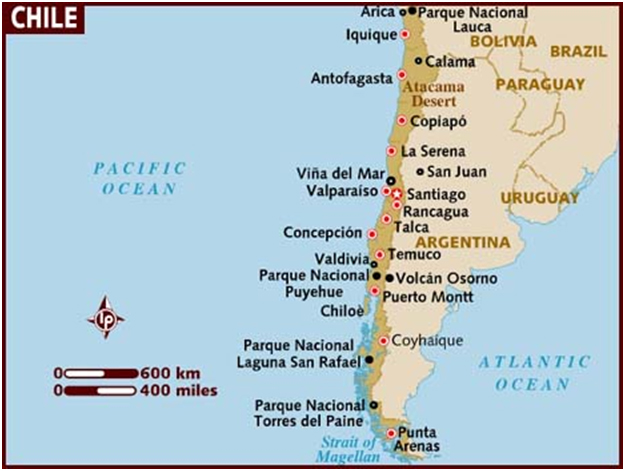Formal
name in Spanish:Republica de Chile
Capital: Santiago
Head of Goverment: President Sebastian PINERA Echenique
Took office: 11 March 2010
Next election: 17 November 2013
Languages: Spanish
Surface area: 756,950 km2
Population: 17,216,945 (2013 est.)
Labour force: 8.231 million (2012 est.)
GDP: US$319.4 billion (2012 est.)
GDP per Capital: US$18,400 (2012 est.)
GDP Growth Rate: 5% (2012 est.)
Inflation: 2.8% (2012 est.)
Main economic sectors:
Copper mining, Financial services, Personal
services, Retail, Food production
Main export commodities: copper, fruit, fish products, paper and pulp, chemicals, wine
Value of Exports :
US$83.66 billion (2012 est.)
Largest companies (take from top 500 ranking):
CODELCO, EMPRESAS COPEC, ENAP, ENERSIS,
MINERA ESCONDIDA
Top business schools: PUC
CHILE, UNIVERSITY OF CHILE, UNIVERSITY DEL
DESARROLLO
Poverty (% living on <US$2/day):
15.1% (2009 est.)
Education (% of young people in higher education):
52%
Human development index (2012):
0.819
Energy consumption (Quadrillion Btu):1.358
Energy production (Quadrillion Btu):0.336
Sources of energy: oil
(34%), natural gas (21%), hydropower (21%),
coal (10%)
(Source: CIA, The World Factbook)
|










